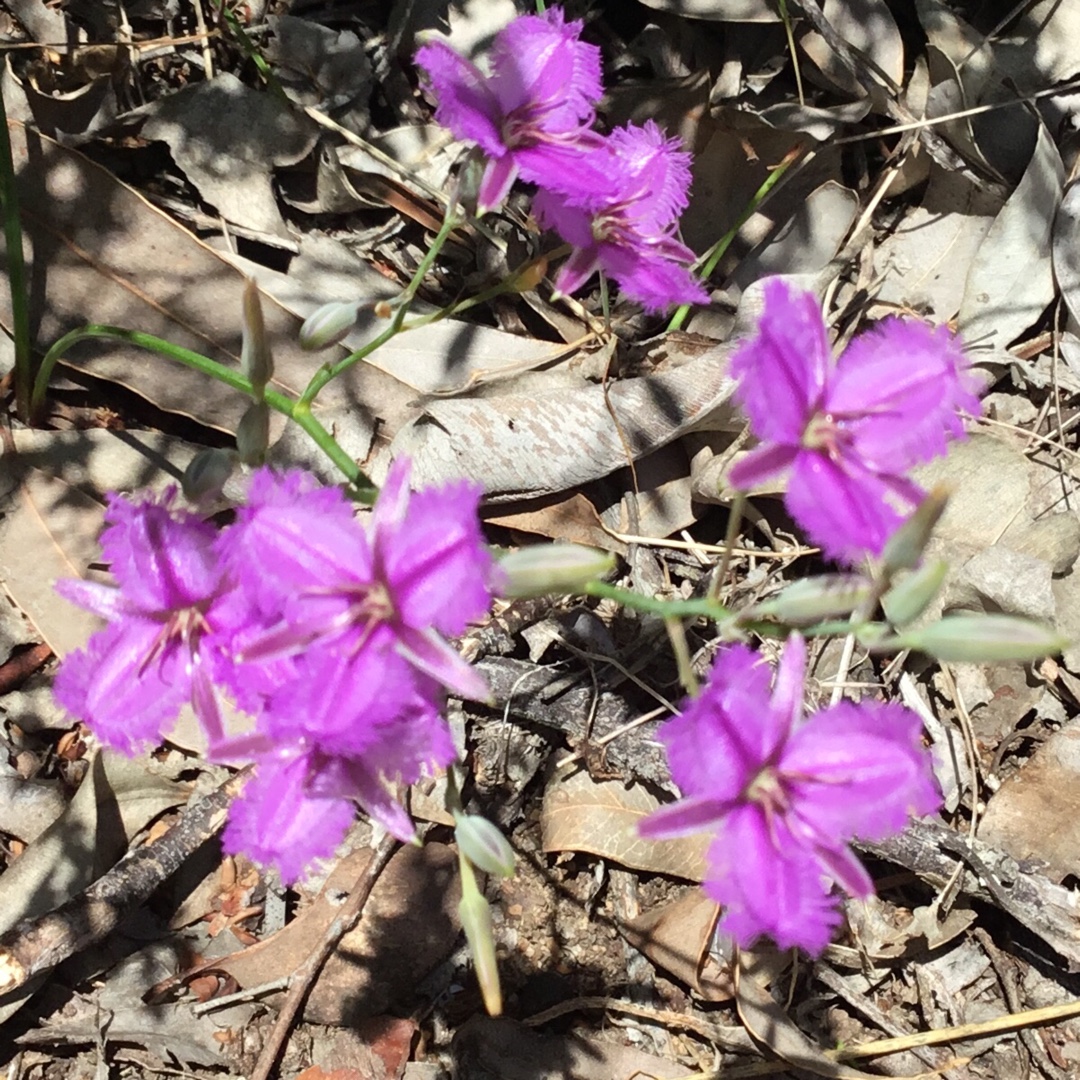
Thysanotus scaber
Rough Fringed Lily
The flowers of the Rough Fringed Lily are bright mauve and there are 3 petals each decorated with fringed edges. It flourishes in a dry climate with low humidity. This plant grows best in a region that has a Mediterranean climate with wet winters and dry summers. Thysanotus scaber is able to grow in soil that has excellent drainage, but is also able to grow in more sandy soil. However, if the soil is too fine, it may cause the roots to rot.
Contributed by @fruition100
-
Full sun to partial shade
-
Very little water
-
A little frost hardy: 32F (0°C)
-
Light and free draining
Common name
Rough Fringed Lily
Latin name
Thysanotus scaber
type
Tuber
family
Asparagaceae
ph
5.0 - 7.5 Acid - Neutral
Plant & bloom calendar
-
Best time to plant
full grown dimensions
 0.15 M
0.40 M
0.15 M
0.40 M
Thysanotus scaber
The flowers of the Rough Fringed Lily are bright mauve and there are 3 petals each decorated with fringed edges. It flourishes in a dry climate with low humidity. This plant grows best in a region that has a Mediterranean climate with wet winters and dry summers. Thysanotus scaber is able to grow in soil that has excellent drainage, but is also able to grow in more sandy soil. However, if the soil is too fine, it may cause the roots to rot.
Planting
From Early Spring TO Early Spring
Found growing naturally in the warm temperate to tropical zones, it requires a fertile well-drained sandy loam in a sunny position. In general, Thysanotus scaber is able to grow in soil that has excellent drainage, but is also able to grow in more sandy soil. However, if the soil is too fine, it may cause the roots to rot.








